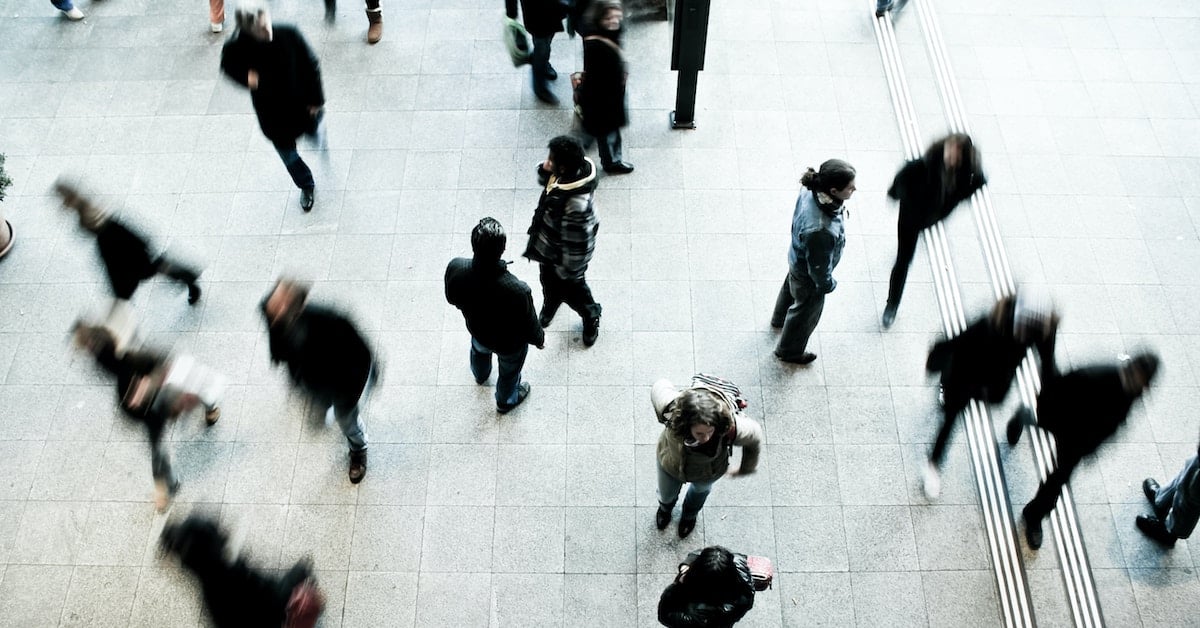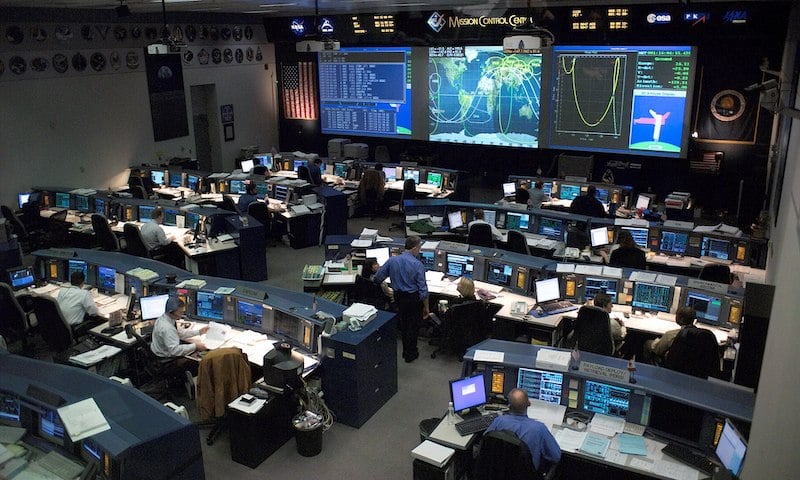Learn how you can use walla sound effects to bring your next project to life.
If you’ve spent time browsing SoundQ, looking through the sound lists for our general libraries, or reading our blog, chances are you’ve come across the word “walla.” Unlike most sound categories, which are fairly straightforward and literal, walla can be perplexing if you’re encountering it for the first time. The name might confuse you at first, but we can guarantee you’ve heard walla sounds hundreds or thousands of times in movies, TV, games, and even the real world. This article will provide some background on what walla is, how it’s made, and how you can use it to make your productions more immersive.
In short, walla is the sound of people talking indistinctly in the background. Also called “rhubarb” in British English, walla typically sounds like a murmur of voices with few discernible words or phrases. The main purpose of walla in sound design is to give life to a scene where people are present, making it feel more alive without distracting from the main dialogue or other sound effects. Because walla is used in nearly every genre and medium, it’s one of the most in-demand types of sound effects. In fact, just searching the word in our sound effects browser turns up more than 2,500 recordings containing walla. To make the most of walla sound effects in your projects, it helps to first understand how it’s made.
How is Walla Recorded?
Walla recordings are usually made in one of two ways: captured candidly in public spaces or recorded by a loop group in a studio.
Real-World Walla
When capturing walla “in the wild,” the first step is to find the right location. For example, a library would be an excellent choice for capturing sparse, hushed voices, while a crowded public market would yield a dense cacophony. The acoustics of the physical space can have a large impact on the sound of the walla as well – a historic, multi-story brick library will have much more reverb than a modern small town library, while indoor and outdoor markets also have distinctly different sounds. These variables (and many more) give each walla recording its own character, which is why there are so many different options available.
When recording real-world walla sounds, the nature of the environment will influence the recordist’s choice of equipment. If recording in stereo, a recordist might choose a portable handheld recorder with onboard microphones or a pair of head-mounted binaural microphones for discreet recording. Recording in surround or Ambisonic formats requires a larger microphone array, which is typically mounted in a “blimp” for wind protection. This method makes it possible to capture more immersive walla – but because it’s more noticeable, it may also alter the behavior of people nearby, resulting in a less natural sound.
Studio Walla
When creating custom walla with a loop group, there are a few different methods to use. If the group is all in one studio together, they’ll arrange themselves around the microphones and sometimes move around if the situation requires it. The group may or may not use individual mics as well, giving the mixer greater control over their levels. Walla can also be recorded remotely, with each actor recording their part alone or all together on a video call. In these situations, a mixer will manually edit and pan the voices in stereo or surround to create a balanced blend.
In some cases, walla is performed live by extras on set and becomes part of the production tracks. This provides the most realistic walla with real lip sync, but it also means it’s baked into the main characters’ dialogue tracks.
"When capturing walla “in the wild,” the first step is to find the right location. For example, a library would be an excellent choice for capturing sparse, hushed voices, while a crowded public market would yield a dense cacophony."
Some scenes call for specialized walla featuring technical jargon to increase immersion.
How to Use Walla
Walla is the perfect tool to reach for when you need to convey a living, breathing space such as a relaxed coffee shop, a busy hospital hallway, or a tense control room during a high-stakes mission. While larger-budget productions often employ dedicated loop groups to record walla, libraries like Sonomar Collection: Crowds can be invaluable for smaller-budget projects or tight timelines where it just isn’t possible to record custom walla.
When looking for the right walla track for your purposes, you’ll need to consider factors like the location, languages or dialects spoken there, the time period, and even the time of day. For example, if you’re cutting sound effects for a scene at a bar in southern Texas, you’d need a medium-sized crowd of English and Spanish speakers talking loudly in small groups. On the other hand, if you’re designing sound for a game set on a populated space station, you might want to combine multiple walla tracks for a mixture of everyday speech and space- or technology-related jargon.
Once you’ve found the right type of walla, the next step is to make it blend into the soundscape naturally so it can do its job of enhancing the ambience without becoming distracting. Here are a few tips for using walla sound effects in different situations:
- In film and TV mixes, you may need to edit or automate the walla track around the dialogue so that no noticeable talking overshadows the actors’ performances, or cut out sounds that don’t make sense for the scene, such as someone yelling “taxi!” during a scene with no visible traffic. Depending on the perspective of the shot, you may want your walla to be in all speakers, just the surrounds, or panned to one side.
- When sound designing crowded areas like airports and stadiums, layering multiple walla tracks can help you achieve a blend of close, medium, and distant voices. It may help to use a convolution reverb plugin to place the tracks in the same virtual space for a more consistent, blended sound.
- For historical settings, real-world walla recordings may not be suitable due to modern dialects and technology, which can take away from the immersion. Especially for time periods older than a few decades, you’ll want to look for walla recorded by actors using the correct accent and vocabulary for the time. For semi-recent historical settings, you may be able to use real-world walla as long as you listen closely for anything that sounds out of place.
- When looping walla tracks for video games, use long recordings to minimize the chance that players will hear the same section twice. Depending on the game engine or middleware you’re using, you may even be able to implement advanced looping features such as randomizing the start and end points or layering two different loops that repeat at different intervals for an ever-changing walla sound.
Expand Your Sound Design Vocabulary
Now that you know all about walla, browse our sound libraries to find the perfect crowds for your next project. If you’re interested in learning more about sound design terminology, check out Sound Effects Terms Explained and stay tuned for more articles demystifying concepts like Foley, worldizing, and more.
Dante Fumo is a Midwest-based sound designer, editor, and mixer specializing in independent film and Dolby Atmos mixing. In his free time, Dante composes electronic music and publishes Harmonic Content, a zine about sound.














